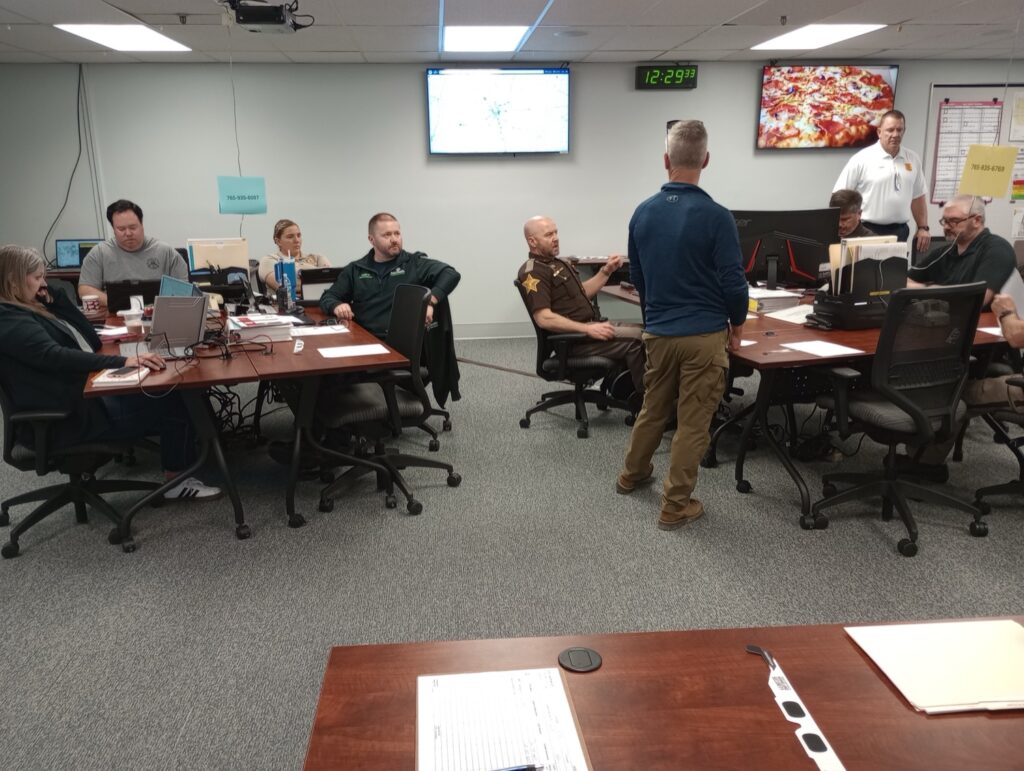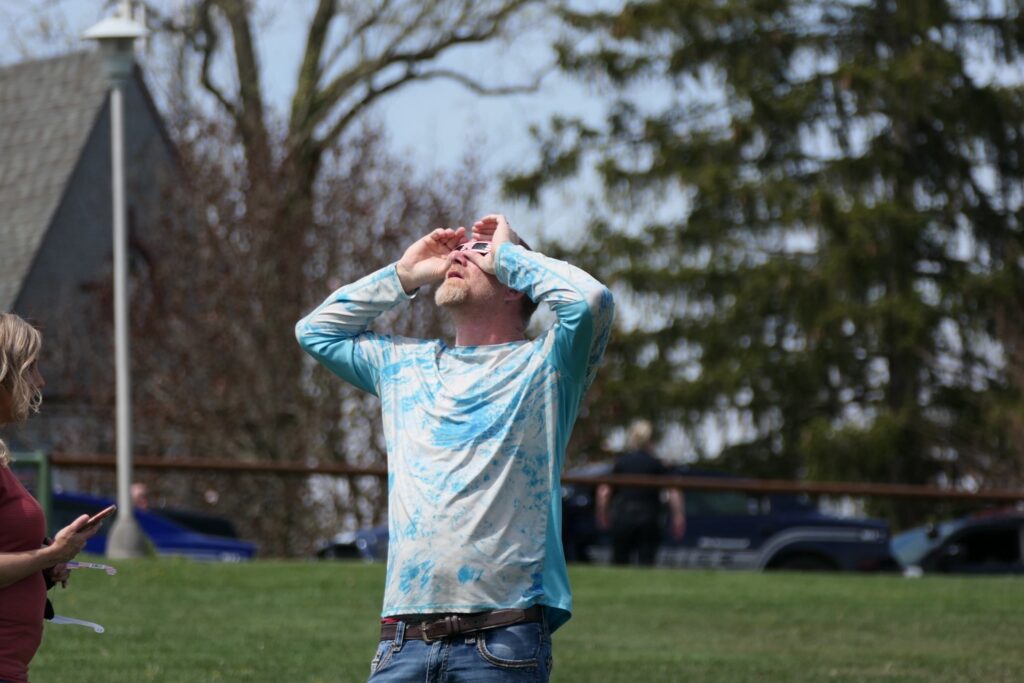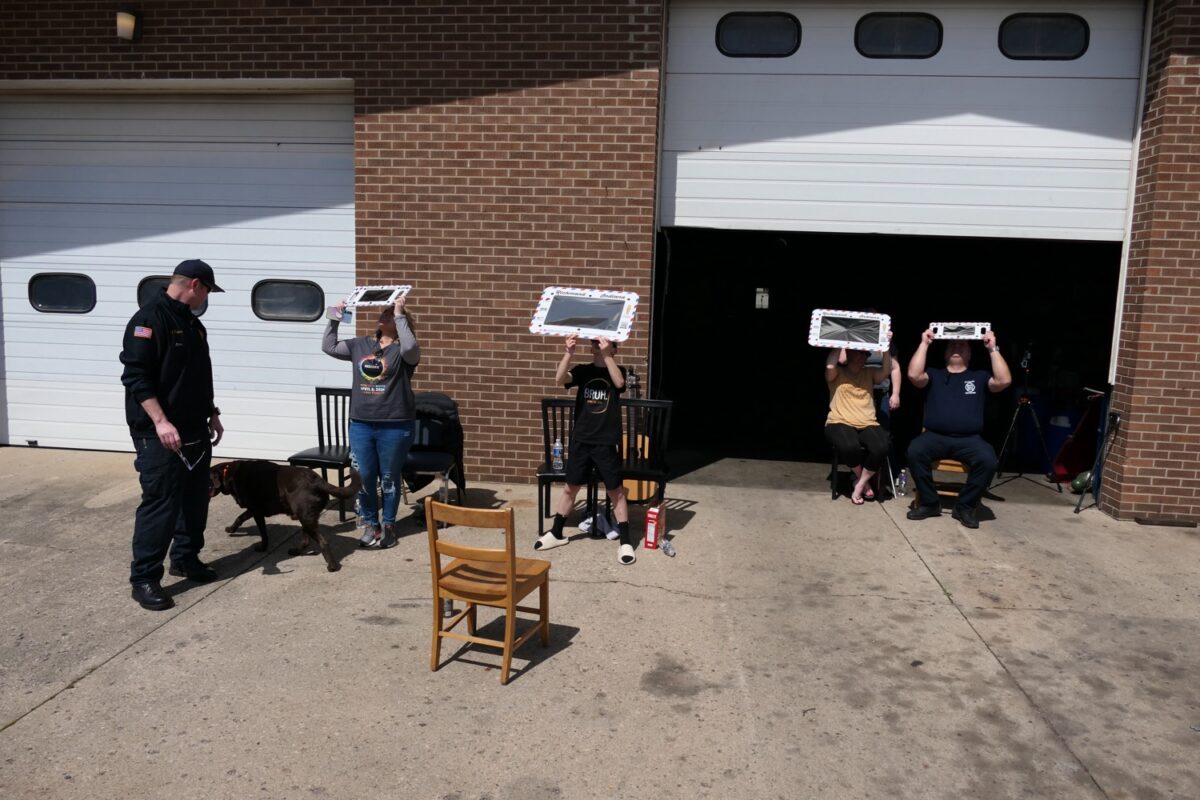The community prepared for massive crowds, traffic delays, and an eclipse celebration of a lifetime on April 8. In the end, the last one happened largely without the first two.
There was heavy traffic around Indianapolis, and hotels did fill up much more than usual. But whether it was the abundance of viewing opportunities across the region, the uncertainty about cloud cover or something else, Wayne County did not see the huge influx of tourists that officials were anticipating.
Judy Brehm, one of the organizers of the “Eclipse and More 2024” festivities that were slated to take over the Wayne County Fairgrounds, said she had to cancel all of the scheduled entertainment because there weren’t enough ticket sales to pay the artists.
“We didn’t have the people,” Brehm said.
As the eclipse approached, Brehm canceled the gate fee that was previously in place just to enter the grounds, in hopes that people would still come and support the food truck and craft vendors set up there.
When the WWN contacted 10 area hotels on Saturday, only one was completely sold out and many still had rooms available, some as many as 15 to 20 rooms open for Sunday night.
For many, the absence of crushing crowds and busy streets was a relief.
Monday afternoon, firefighters at Richmond’s Fire Station 4 were able to enjoy a surprisingly quiet day grilling out with family members as the trucks sat ready in the open bays. There was plenty of parking available near Roosevelt Hill at Glen Miller Park as people from around the country arrived to set up blankets and chairs on the grass. County roads remained clear and downtowns were relatively quiet.
For those who did view the eclipse, it lived up to its potential, but thankfully, not its potential to cause public safety problems. Matthew Cain, director of Wayne County Emergency Management Agency, said there were no issues or concerns before, during or after the eclipse. Just in case, though, EMA took the rare step of opening its Emergency Operations Center inside the Wayne County Administration Building.

“I think it’s safe to say that there’s nowhere near the number of people that was predicted,” Cain said. “At the same time, we were prepared for it, and we had to be. That’s our job.”
EMA brought together leaders from the Emergency Communications Center, Wayne County Sheriff’s Office, Richmond Fire Department, Richmond Police Department, Reid Health EMS and a National Weather Service meteorologist for cohesion and collaboration handling any incidents that might have occurred, Cain said. Having the group together streamlines decision-making and communication. The group can more quickly provide support and resources.
“We want to all be on the same page with input from the various entities,” Cain said.
Even without problems to confront, activating the EOC and working together provided good practice for a future time when there is an emergency requiring EOC action.
Julie Reed, an NWS meteorologist from the Wilmington, Ohio, office tracked weather patterns as the eclipse neared. She said NWS meteorologists were on-site with public safety officials in Ohio and Indiana to offer any necessary assistance with specific weather concerns. In other situations, that could include storms or wind shifts.
“I’m here in case I’m needed because Wayne County and the city of Richmond are concerned about public safety,” Reed said.

Fortunately, Monday provided good eclipse viewing in Wayne County. Reed said high, thin cloud cover would prevent seeing stars during totality, but the area was among the best viewing spots in the country, along with New England. She predicted the mid-70s temperature would drop 10 degrees during totality when Earth’s heat source was blocked.
About 12:30 p.m., Reed provided a weather update in the EOC, right after Jon Duke, deputy director for EMA, spoke to the gathered officials. The hope was a smooth afternoon, and that’s what happened.
The county has been fortunate not to require the EOC for large-scale disasters, Cain said. A scaled-down version has been activated for an Interfaith Apartments fire and last year’s North West F Street industrial fire.
EMA began planning for the eclipse when the state communicated 18 months ago about the eclipse and potential problems. The information was based on after-action reports from areas overrun by eclipse viewers, especially during the 2017 total solar eclipse.
EMA planned within the county, but also with Darke and Preble counties in Ohio and its 12-member Indiana Department of Homeland Security district, Cain said. He called the preparation frustrating because of not knowing how many people would truly come to Wayne County.
The first county-wide meeting was conducted last June. The county subsequently hosted speakers, such as an amateur astronomer who shared problems she experienced when viewing eclipses in other areas and the EMA director for Christian County, Kentucky, where traffic was a problem in 2017. The district conducted a table-top exercise as part of its planning.
“I said from the very beginning that I didn’t want to cause alarm, but we couldn’t bury our head in the sand and think it would not affect us,” Cain said.
The possibility of problems always existed, and Cain said EMA tried to prepare citizens for the worst while hoping for the best. Much of EMA’s messaging, which occurred through radio, newspaper and social media, was similar to preparation for tornadoes or fires, Cain said.
“We want them to be prepared and think about these things and have a Plan B or a Plan C ready to go,” he said of county residents.
EMA will now receive feedback from its partners, decide what worked and didn’t work in its preparation, what should be carried forward and what should be done differently. That will result in a written document for future public safety officials to reference.
“It’s been a great educational and learning process for one of the largest events we’ve had to plan,” Cain said.
A version of this article appeared in the April 10 2024 print edition of the Western Wayne News.

